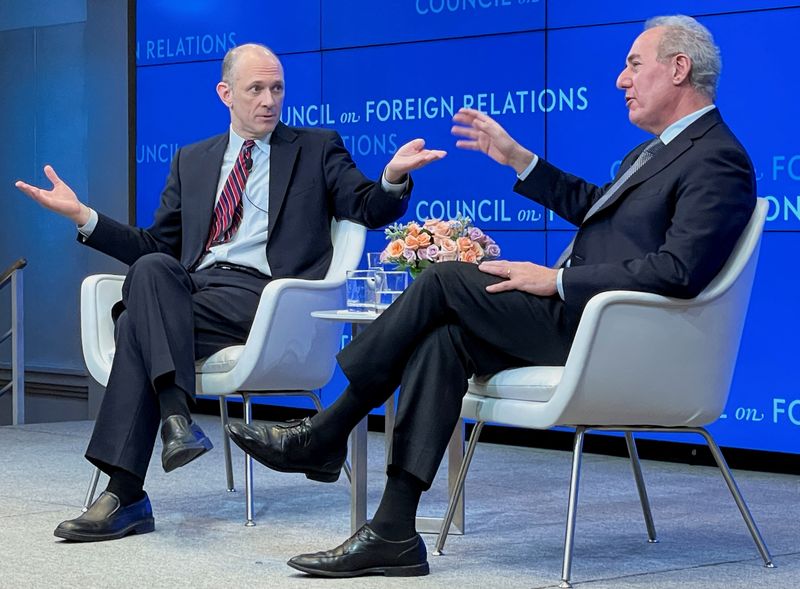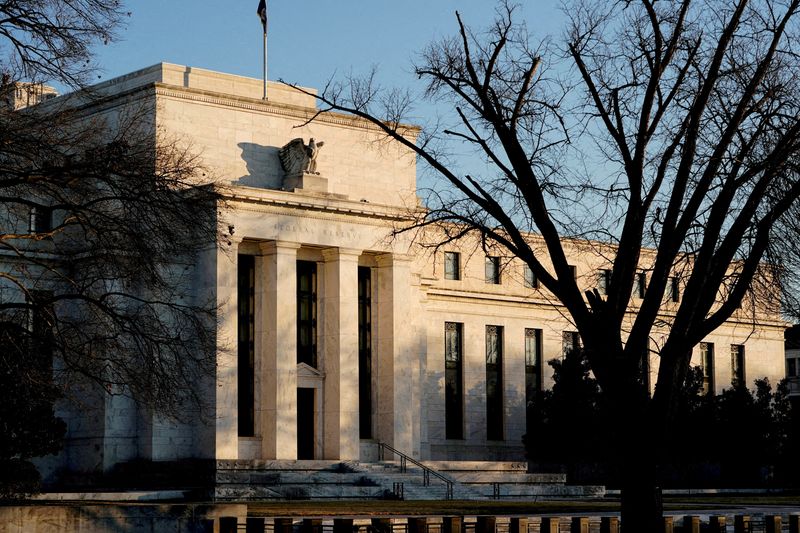By Lindsay (NYSE:LNN) Dunsmuir
(Reuters) - The Federal Reserve's path back to its 2% inflation target rate would still be on track even if price increases run a bit hotter-than-expected over the next few months, and the central bank should be wary of waiting too long before it cuts interest rates, Chicago Fed President Austan Goolsbee said on Wednesday.
"Even if inflation comes in a bit higher for a few months...it would still be consistent with our path back to target," Goolsbee said in prepared remarks at an event hosted by the Council on Foreign Relations in New York. "I don't support waiting until inflation on a 12-month basis has already achieved 2% to begin to cut rates."
The Fed last month kept interest rates unchanged in the 5.25% to 5.50% target range, where it has been held since last July, as it seeks more confidence that the annual pace of price increases is on a sustainable path back down to 2%.
U.S. consumer prices rose more than expected in January, government data showed on Tuesday, amid a surge in the cost of rental housing.
As a result, traders piled into bets the central bank will wait until June to start reducing the policy rate, and now expect three quarter-point cuts by year-end, in line with what Fed policymakers projected in December but less than the four or more rate cuts markets had priced in at the start of the week.
Goolsbee said housing services inflation was "at odds" with market data on rents for new leases and that while he expected pricing pressures there to resume easing, Tuesday's Consumer Price Index (CPI) data meant the "puzzle got bigger... and it is something I am watching."
However he cautioned that the longer-term and broader trend was more important. "Let's not get amped up when you get one month of CPI that was higher than what you expected it to be," Goolsbee said during a question and answer session. "It is totally clear that inflation is coming down."

He also noted that over the past seven months the core Personal Consumption Expenditures inflation gauge, which the Fed also closely tracks and which strips out volatile food and energy prices, has been running at the Federal Reserve's 2% target or even below.
"Rate cuts should be tied to confidence in being on a path toward the target," Goolsbee said, "I think it's worth acknowledging that if we stay this restrictive for too long, we will start having to worry about the employment side of the Fed's mandate."
